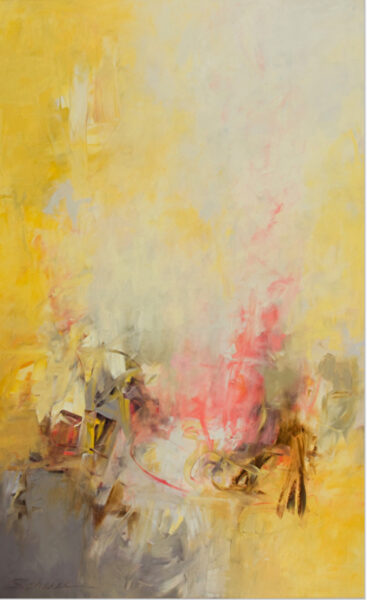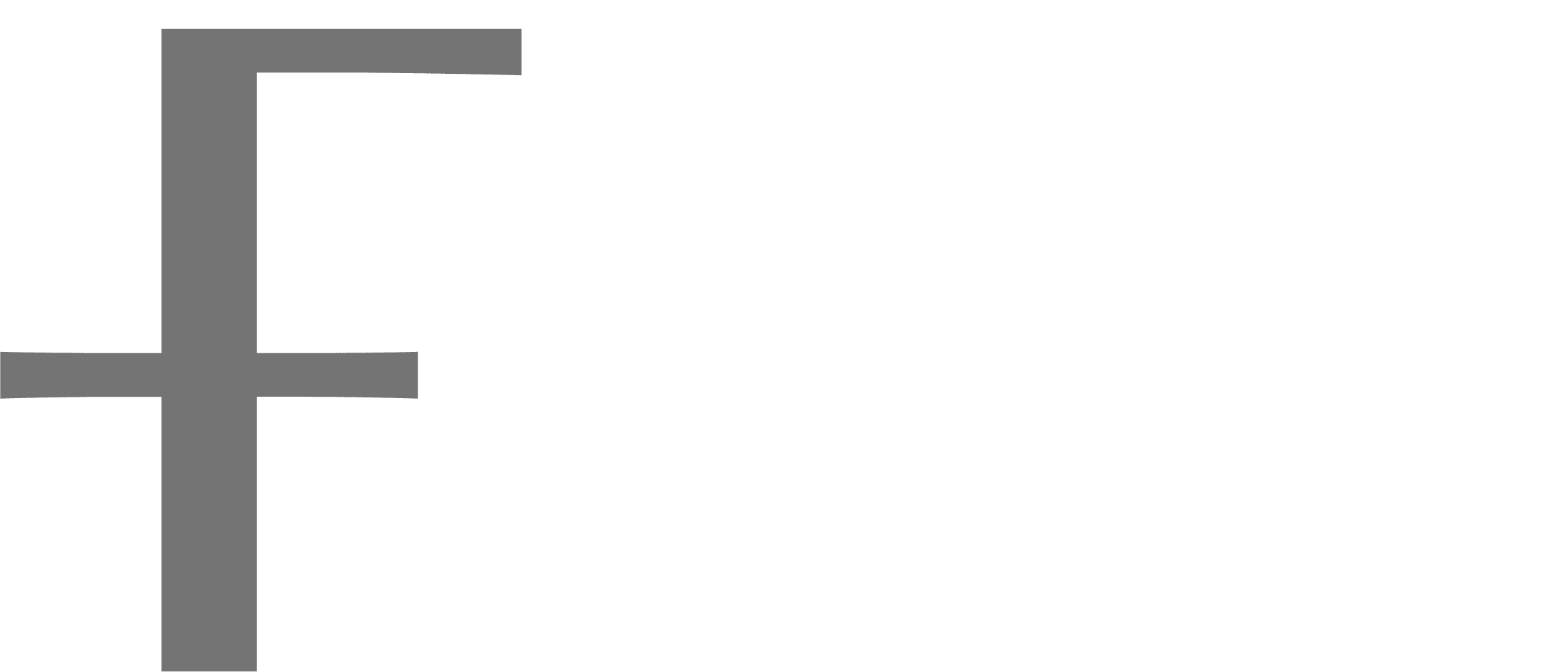English painter and art critic Roger Fry questioned whether abstract art could ever really be popular, summarizing his concerns at a lecture he gave to the Fabian Society in 1917: “In proportion as art becomes purer, the number of people to whom it appeals get less.”
And yet…
To the question of what best defined 20th-century art, especially in the second half of the era, the answer would have to be abstraction.
Which is synonymous with non-objective art and the way Slate Gray newcomer Karen Scharer defines her work in general and specifically for her upcoming show, “Intuitive Alchemy,” on display at the gallery through January 31.
“The majority of my work is non-objective. The influence of the natural world is undeniable, but unless I am actually doing on-site landscape work or I get an urge to do abstract florals – both of which I occasionally do – the world I bring to the canvas is pretty much created in my head from a lifetime of input and experiences.”
Scharer’s brief summation of her painting dovetails with the words of artist Todd Murphy: “Art is not about the right color on the right surface; it’s about synthesizing one’s experience.”
Bottom line: Great artists throughout history have come to understand the universal truth underlining Scharer’s, large, ebullient abstractions: What is real is not how a thing looks, not its surface, but the essence of whatever is being viewed.
To whit:

Sugar
Pictorial communication in the form of signs, symbols, images and colors on two-dimensional surfaces is an old, rich human invention that started out on rocks and ceramics and remains one of the most elegant, intimate means of self-expression and personal engagement.
That engagement for Karen Scharer began when she was just a girl. “My parents met in an oil painting class, so exposure to art and art appreciation was inevitable. Neither was a professional artist, but both had an appreciation for how art can enliven and enrich life. Dad was a chemical engineer; mom was a housewife and perpetual art student, starting in college and extending through much of her adult life. She was mostly a portrait painter and, for about 15 years, also created both ceramic and bronze figurative sculpture. Small pan watercolor sets and drawing pencils are some of the earliest toys I remember.”
Scharer, who has painted professionally for over three decades, holds a degree in forestry from the University of Montana: “A reflection of a love of the outdoors that I absorbed through observation and participation with my dad. To this day I am more comfortable wandering in open fields and forests than I am in any urban environment.”
After a short time working for the Forest Service on a wildland fire information system, Scharer transitioned to a position with IBM and a move to Albuquerque.
“In New Mexico it was hard not to be drawn into the rich and varied art culture of the region, and I quickly found my childhood interest in art reawakened. I signed up for a watercolor class that was recommended by a coworker and, from that point in 1986, I have never stopped painting.”
The evolution of Scharer’s work was very gradual. She did not wake up one day and decide to do abstractions.
“My watercolor paintings started to transition toward what I would describe as ‘organic design,’ which for me meant an entire painting of leaves, or stones, or branches, putting more importance on color and design, and less on subject matter.”
Scharer then developed an interest in acrylic as a water medium on paper (just like watercolor) because it provided much more saturated tones. Then she was exposed to the idea of collaging different kinds of paper onto her paintings before and during the creative process.
“The mixture of papers produced a lot of interesting textures the byproduct of which was a loss of control over how the paint behaved. Precision became impossible,” explained the artist. “At that point I realized creating a successful painting using just the basic elements of color, composition, line, value, etc. was more interesting and challenging than creating a painting that relied on a familiar subject – a horse or flower or tree– to elicit a response from a viewer. From that point on, I became an abstract painter and that challenge has compelled me to continue working all these years.”
And why the switch from acrylics to oil?
“Colorado’s dry climate causes acrylic to dry so quickly that it is often impossible to move a brushstroke even five minutes after it’s laid down on a canvas. I wanted to be able to put paint down and then move it, mark back into it, blend it with a previous stroke. None of that was consistently possible with acrylic, and I didn’t like how the additives available to slow the drying time changed the way the paint behaved. I knew from watching my mom paint as a kid (as well as observing my peers) that oil paints were much more forgiving, so when I had the opportunity to learn to paint in oil, I jumped at it. I am still enthralled with the flexibility, luminosity, and richness of oil and am hugely appreciative of the range of creative expression the medium allows.”
Karen Scharer is now based in Pueblo West, CO where her home and studio sit beneath dramatic skies just minutes from the beautiful Arkansas River and a short drive from some of Colorado’s most spectacular mountain peaks. The spectacular Colorado landscape is a constant source of inspiration for her intuitive approach to her art.
“Prior to moving to Pueblo West in 2018, I lived for 11 years in a small community near Rocky Mountain National Park,” Scharer added. “To say that the landscape in that location is dramatically different from my current surroundings would be a comical understatement. But I see beauty in both. When I first moved to Pueblo West, my work was noticeably more earth-toned with golds, browns, grays and gray-greens dominating. The move also brought back a lot of visual memories of arid New Mexico landscapes from my days in Albuquerque. Nevertheless, I loved living in the mountains, and combined with a lifetime of travel and exploration from Alaska to Tierra del Fuego, the influence of the mountains, oceans, rivers, and lakes I have experienced continues to resurface and is perhaps an even stronger force than my current surroundings.”
What does Scharer hope her Slate Gray audience will take away from her show?
“I hope the work will connect with viewers in a way that is more basic and universal than just ‘pretty paintings.’ I have a strong sense of optimism about people and our ability to overcome obstacles and build a better world where all species – and the planet – can survive and thrive. I hope my work conveys the sense of optimism and gratitude I have for the incredible world we live in. I’d like to think my paintings are inspiring and uplifting. And I hope those are the feelings viewers will take away from ‘Intuitive Alchemy.'”
Scharer’s paintings have been featured in dozens of solo and group shows. Her work has been honored with many awards, accepted into numerous juried exhibitions, and included in hundreds of public, private, and corporate collections.
Like all fine abstract art, like the artist herself, Karen Scharer’s latest paintings says smart things simply.
Written by:
SUSAN VIEBROCK
Susan is Telluride Inside… and Out’s founder and editor-in-chief, the visionary on the team, in charge of content, concept and development. Susan has covered Telluride’s cultural economy, which includes non-profits and special events, since 1993. Much of her writing features high-profile individuals in the arts, entertainment, business, and politics. She is a former Citibank executive specializing in strategic planning and new business development, and a certified Viniyoga instructor.



